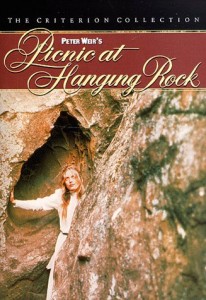 Author and TheoFantastique contributor Paul Meehan introduces the story of Picnic at Hanging Rock and its possible connection to a paranormal phenomenon. Paul is the author of a number of books including SAUCER Movies: A UFOlogical History of the Cinema (The Scarecrow Press, 1998).
Author and TheoFantastique contributor Paul Meehan introduces the story of Picnic at Hanging Rock and its possible connection to a paranormal phenomenon. Paul is the author of a number of books including SAUCER Movies: A UFOlogical History of the Cinema (The Scarecrow Press, 1998).
The Strange Case of Picnic at Hanging Rock
By Paul Meehan
“On Saturday, 14th of February 1900 a party of schoolgirls from Appleyard College picnicked at Hanging Rock near Mount Macedon in the state of Victoria. During the afternoon several members of the party disappeared without trace…”
So begins Peter Weir’s 1975 mystery-thriller Picnic at Hanging Rock. Based on a 1967 novel by Australian writer Joan Lindsey, the film follows the plot of the book fairly closely to weave an eerie tale of mass-disappearance that would become an urban legend and suggest deeper, more alien mysteries behind the strange events.
The girls at Appleyard College embark on their fateful picnic on Valentine’s Day, in the full heat of the Australian summer. They are transported in a horse-drawn wagon to Hanging Rock, a geologic formation comprised of weird volcanic monoliths. The spinsterish headmistress Miss McCraw (Vivean Gray) is in charge of the expedition, and warns the girls against any “tomboy foolishness,” but in spite of her admonitions four of the girls go off exploring by themselves. As Miranda (Anne-Louise Lambert), Irma (Karen Robson), Marion (Jane Vallis) and Edith (Christine Schuler) traipse off to the Rock on their voyage of discovery, they are briefly observed by two young men, Michael (Dominic Guard) and his valet Albert (John Jarratt), who are also picnicking at the Rock with Michael’s parents. While they are gone Miss McCraw notices that all of the party’s watches have mysteriously stopped at exactly 12 noon.
Ascending amid strange-looking rock formations, the girls reach a plateau where they suddenly fall into a deep, mysterious slumber. Back at the picnic, all of the members of the Appleyard party also fall asleep, with the exception of Miss McCraw. Then, just as suddenly, the four girls awaken. As Edith watches in horror, Miranda, Irma and Marion march up the hill in lockstep as if they are in a trance. Edith also notices an anomalous red cloud hovering over the Rock as she is consumed in a sudden terror and runs back toward the picnic site.
When the picnickers return to the college late that evening the three girls, along with Miss McCraw, are missing, and a massive police manhunt from the nearby town of Woodend fails to find any trace of them. Edith’s recollections of the event are confused and fragmentary, but she does rememberseeing Miss McCraw walking toward the hill where the girls were last seen in an entranced state, wearing nothing but her underwear.
After a week goes by there is little hope that the girls or the headmistress will be found alive, but Michael, who harbors a lingering obsession with the students after glimpsing them on the day of the picnic, decides to look for them on his own. He winds up spending the night at Hanging Rock, and is found the next day in a confused state, clutching a piece of lace from one of the girl’s dresses, Soon afterward, Irma is discovered alive in a nearby cave. A medical examination reveals that she has not been raped, and that her feet are curiously unmarked although she is not wearing shoes or stockings. Oddly, her hands are bruised and her fingernails torn, and she was found not to be wearing her corset.
When she recovers, Irma can remember nothing that transpired during her disappearance at Hanging Rock. The strange goings-on cause a furor in the town as rumors fly, including a report of an anomalous light flashing around a pigsty on a farm about a mile from the Rock. Ultimately, the missing people are never found and the mystery is never solved. As one townsman wryly observes, “There’s some questions got answers, some haven’t.”
Weir’s offbeat film, shot on location at Hanging Rock, brilliantly utilizes the Australian landscape while deftly evoking the quirky sexual repressiveness of the late Victorian period. While the film is slow-paced by American movie standards, the director builds a powerful sense of mystery around the inexplicable events. The film was a critical success in Australia and overseas, and helped pave the way for the popularity of Australian cinema of the 1970s and 80s in the international market. Weir would go on to direct The Last Wave (1977) an imaginative apocalyptic thriller that explored the magical world of aboriginal shamanism.
A curious urban legend grew up around the events portrayed in the novel and the film. Joan Lindsey’s book coyly suggests that the story is based on true events. She wrote: “Whether (the book) is fact or fiction, my readers must decide for themselves. As the fateful picnic took place in the year nineteen hundred, and all the characters who appear in this book are long since dead, it hardly seems to matter.” Similarly, in an interview with the Melbourne Herald, Lindsay stated that, “I can’t tell you whether the story is fact or fiction…but a lot of very strange things have happened around the area of Hanging Rock…things that have no logical explanation.” However, after many extensive journalistic
investigations, no documentary evidence of the alleged event has ever surfaced, leading to the conclusion that the plot of Picnic at Hanging Rock is entirely fictive.
Even after the story was proven to be fiction, fans of the movie and the book continued to try to solve the mystery over the years. In 1980, Yvonne Rousseau published a book entitled The Murders at Hanging Rock, which offered up a number of scenarios explaining the enigma. It theorized that the missing girls and their teacher could have been raped and murdered by Aborigines, or by Michael and Albert, or they could simply have been buried underneath a rockslide. In 1987, another book, The Secret of Hanging Rock appeared, which contained Lindsay’s previously unpublished chapter of the original novel that provided a more mystical resolution to the mystery. According to Lindsay, the girls were confronted by a kind of time warp and were transformed into little crab-like arachnid creatures who disappeared into the interior of the earth by crawling through cracks in the rocks.
But while more conventional explanations of the disappearances and Lindsay’s own bizarre resolution to the mystery fail to satisfy, there is one phenomenon that would seem to offer a more likely solution for the enigmatic events–alien abduction. Many of the anomalies described in the Hanging Rock narrative are consistent with features reported in cases of UFO close encounters.
First, there is the matter of the strange red cloud observed hovering above the Rock during the disappearance. As if to underscore a viewpoint looking down from above, Weir shoots the scene of Edith running from the Rock in terror from an extremely high angle. UFOs have long been associated with anomalous clouds, as evidenced in the encounter of Rex Heflin, an Orange County, California highway traffic inspector who took a series of Polaroid photos of a metallic craft transforming into a cloud in 1965.
Then there is the matter of the stopped watches at the picnic. In the famous abduction case of New Hampshire couple Betty and Barney Hill in 1961, both Betty and Barney found that their watches had stopped after the abduction event. In 1979, Minnesota Deputy Sherrif Val Johnson had a late night close encounter with a glowing UFO that damaged his police cruiser. Johnson’s mechanical wristwatch and the car’s electric dashboard clock were both found to be inexplicably running exactly 14 minutes slow. Some researchers theorize that UFOs are actually time travel devices that sometimes cause temporal anomalies to occur.
The odd behavior of the picnickers is also consistent with events reported during abductions. All of the students and staff at the picnic fall into a mysterious sleep, while only those who are slated to disappear awaken. This phenomenon parallels what is known as being “switched off” in UFO parlance, where those chosen for abduction remain conscious while those not selected are rendered unconscious. Non-abductees being “switched off” is a fairly common feature of abduction reports. Abductee Betty Andreasson, for instance, claims that several members of her family were switched off while she was taken aboard a UFO.
Abductees often report that they are compelled to perform certain actions as if they have been placed in some kind of hypnotic trance in which they are placed under the control of their abductors. Betty and Barney Hill, for instance, felt compelled to inexplicably turn off the main road they had been traveling on and onto a secluded side road where the abduction took place. In Picnic at Hanging Rock, Amanda, Irma, Marion and Miss McCraw are drawn to the place where they will disappear as if they are entranced.
When Irma returns, she has total amnesia about what occurred during the time when she was missing. This “missing time amnesia” is another common feature of alien abduction reports, and was first explored in depth in researcher Budd Hopkins’s 1981 book Missing Time. The Hills experienced this type of amnesia in connection with their abduction experience, the details of which only emerged as they underwent hypnotic therapy. Researchers don’t know if missing time amnesia is imposed upon abductees via alien mind control, or if it is a natural function of the human mind that suppresses unpleasant experiences.
Joan Lindsay’s novel was written in 1967, when little was known about the abduction phenomenon. Nonetheless, her work of fiction eerily anticipates exotic details of alien abduction narratives. There are other examples of life imitating art in the history of the UFO phenomenon. Bernard Newman’s 1948 novel The Flying Saucer, for instance, posits UFOs that stop automobile engines long before this became a common theme in many UFO reports. Similarly, Arthur Koestler’s 1933 play The Twilight Bar portrays a UFO that causes an electrical power blackout decades before this aspect of the phenomenon was reported in the UFO literature.
Oddly, the fictional vanishings in Picnic at Hanging Rock also seem to prefigure a mysterious real-life disappearance that occurred in the same general area of Victoria, Australia. Just three years after the release of Weir’s film, on the evening of October 21, 1978, a young Australian pilot named Frederick Valentich was flying a Cessna 182 light aircraft on a relatively short flight from Moorabbin Airport in Victoria to King Island. While over the area of the Bass Strait, Valentich radioed that he encountered a large, brightly lit UFO that hovered over his plane. Soon afterward, all radio contact with the aircraft abruptly ceased. A massive, three-week search of the area failed to find any trace of Valentich or his airplane. No debris or even an oil slick on the water’s surface was ever discovered. Like the picnickers from Appleyard College, the young pilot seemed to have simply vanished into thin air under mysterious circumstances.
The Valentich disappearance remains one of the most puzzling incidents in the history of the UFO phenomenon. Like the Australian farmer in the film explains, “There’s some questions got answers, some haven’t.”
Related posts:
“Paul Meehan: SAUCER MOVIES: A UFOlogical History of the Cinema”
“Paul Meehan: Sleeping with the Aliens: Weird Encounters of the Fourth Kind”
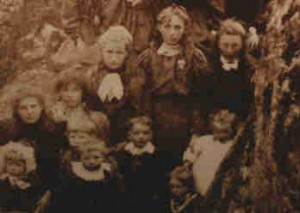
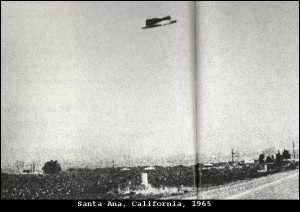
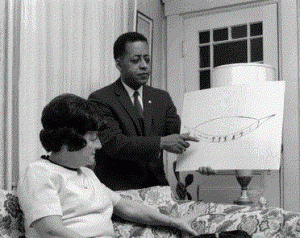
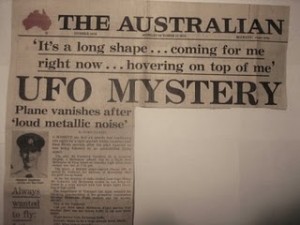





There are no responses yet